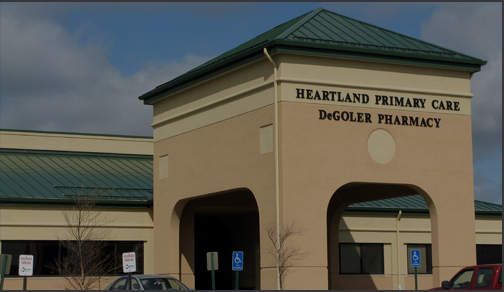Leading Tips for Choosing the Right Clinic for Your Urgent Care Demands
Leading Tips for Choosing the Right Clinic for Your Urgent Care Demands
Blog Article
Understanding the Role of Urgent Treatment in Offering Timely Therapy for Non-Life-Threatening Conditions
Immediate treatment centers have arised as a vital part of the health care landscape, dealing with the prompt requirements of individuals with non-life-threatening conditions. Comprehending the subtleties of immediate care could considerably influence client results and the general efficiency of healthcare delivery.
What Is Urgent Treatment?
Immediate treatment refers to a classification of medical solutions designed to attend to non-life-threatening problems that require immediate interest. These facilities act as an intermediary in between medical care physicians and emergency spaces, providing a convenient choice for patients that require prompt care without the comprehensive waiting times commonly related to emergency departments.
Urgent treatment centers are commonly staffed by doctor, including doctors, registered nurse experts, and medical professional assistants, who are trained to detect and treat a vast range of problems. Usual solutions given by these centers consist of treatment for minor injuries, illnesses, and infections, in addition to diagnostic examinations such as X-rays and lab job.
In addition, immediate care facilities frequently accept walk-in patients, eliminating the requirement for consultations. Generally, urgent treatment plays a crucial duty in the health care system, ensuring clients can access important clinical services quickly and effectively.

Numerous people might locate themselves uncertain regarding when to look for treatment at an immediate treatment center as opposed to a primary care medical professional or an emergency clinic. Urgent treatment is created to deal with non-life-threatening conditions that need punctual attention however are not serious adequate to call for an emergency clinic see.
Typically, one need to think about immediate treatment for concerns such as small cracks, sprains, cuts calling for stitches, or infections like urinary system infections. Furthermore, cool or influenza symptoms, rashes, and allergies can additionally be suitably handled in this setup.
It is very important to note that immediate care is not ideal for lethal emergencies, such as breast discomfort, problem breathing, or extreme bleeding, which require instant emergency situation space intervention.
Individuals that do not have accessibility to a health care medical professional or can not secure a timely appointment might likewise take advantage of immediate treatment services. Eventually, comprehending when to use immediate treatment can lead to extra reliable health care shipment, permitting people to get the proper level of treatment based on their particular health demands.
Benefits of Urgent Care Centers
Picking immediate care centers for non-life-threatening conditions provides numerous benefits that enhance individual experience and access. One main advantage is the lowered wait times contrasted to conventional emergency areas. Immediate treatment centers generally operate on a first-come, first-served basis, permitting people to receive prompt medical interest without the long hold-ups often connected with health center setups.
In addition, urgent treatment facilities supply prolonged hours, including evenings and weekend breaks, accommodating people with differing schedules. This adaptability ensures that individuals can seek treatment when it is most hassle-free for them, further promoting timely treatment.

Moreover, these facilities frequently provide an extensive variety of services, including small procedures and analysis examinations, all under one roof. This consolidation of services not just streamlines the patient experience yet likewise fosters a much more cohesive approach to taking care of non-life-threatening health and wellness problems, ultimately benefiting total client outcomes.
Typical Conditions Dealt With
At urgent treatment centers, a selection of non-life-threatening conditions can be properly treated, providing individuals with prompt and available clinical assistance. These centers are particularly adept at resolving concerns that call for punctual focus but do not posture an immediate risk to life or limb.
Common problems treated at urgent treatment facilities include minor injuries such as sprains, strains, and fractures. Urgent care centers are outfitted to carry out essential analysis tests, such as X-rays and laboratory examinations, allowing them to provide comprehensive treatment.
Furthermore, immediate care suppliers can carry out inoculations, aiding to avoid the spread of transmittable conditions - Urgent Care. They also use solutions for minor treatments, such as suturing wounds or draining abscesses. By offering these varied solutions, immediate treatment centers play an essential function in bridging the space in between health care and emergency situation solutions, guaranteeing people obtain timely treatment for a wide variety of problems without the requirement for lengthy delay times generally related to emergency situation rooms
Exactly How Urgent Care Supports Healthcare System
Immediate treatment centers play an important function in sustaining the overall medical care system by alleviating the burden on emergency departments and giving prompt review accessibility to treatment for non-life-threatening conditions. By handling instances such as small injuries, infections, and health problems, urgent care centers enable emergency divisions to concentrate on even more essential individuals calling for instant attention.
Furthermore, urgent treatment centers enhance health care ease of access, providing extensive hours and an easier alternative to traditional health care settings. This accessibility is particularly beneficial for people that might not have a regular medical professional or that call for instant treatment beyond normal workplace hours. Therefore, urgent care centers effectively lower improve and wait times patient satisfaction.
In addition, immediate care centers contribute to set you back savings for both individuals and the health care system by offering lower-cost services compared to emergency situation divisions. This monetary efficiency is vital in an age of rising medical care prices, enabling individuals to get required care without incurring inflated expenditures.
Final Thought
In conclusion, immediate treatment centers play a vital function in the medical care system by providing prompt therapy for non-life-threatening conditions. By linking the gap between key care and emergency situation spaces, these centers make sure that people receive prompt medical focus without the lengthy delay times typically related to emergency situation departments. The access and effectiveness of immediate care centers add dramatically to relieving the total problem on healthcare resources, improving individual end results, and promoting a more effective health care delivery system.
Immediate treatment facilities have click this link actually arised as a crucial part of the health care landscape, resolving the immediate demands of clients with non-life-threatening problems. Urgent treatment sees typically incur reduced out-of-pocket expenses compared to emergency situation division check outs, making treatment more budget friendly for clients without jeopardizing high quality. Urgent treatment facilities are geared up to do required diagnostic examinations, such as X-rays and laboratory tests, enabling them to give comprehensive care.
By offering these varied services, immediate care centers play an essential duty in bridging the void between main treatment and emergency services, making certain patients receive prompt treatment for a wide array of conditions without the requirement for lengthy wait times usually associated with emergency rooms.
Additionally, urgent treatment facilities improve medical care availability, supplying extensive hours and an extra convenient option to traditional main treatment settings.
Report this page